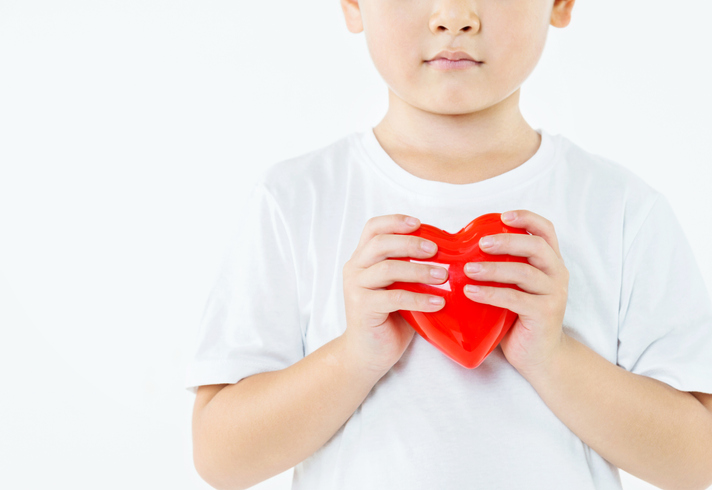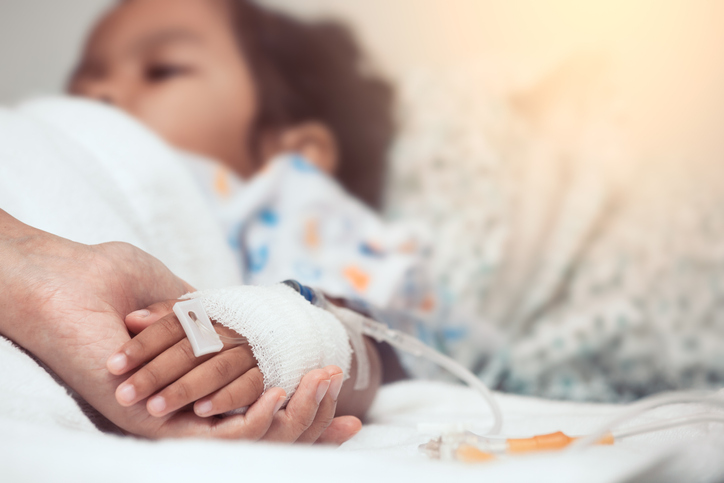Kawasaki Disease (KD) is the leading cause of acquired heart disease in children
Kawasaki Disease is an inflammatory condition and categorised as a type of vasculitis that affects the arteries of the body. It mainly affects children, and it’s impact can be most serious in the very young – in particular infants, however it can be found in any age.
The most serious complication of Kawasaki Disease is damage to the coronary arteries. When untreated, up to a quarter of children develop coronary artery damage which can lead to acquired heart disease.
Identified in 1967 in Japan by Dr Tomisaku Kawasaki, the cause of Kawasaki Disease is still unknown. The illness presents with several symptoms common to a variety of other childhood diseases and infections and is therefore often misdiagnosed.

Kawasaki Disease (KD) is an illness that primarily affects young children. It is characterised by an inflammation of the arteries throughout the body.
About two thirds of patients are under five years old, older children including teenagers, and more uncommonly, adults, as well. KD is more common in boys than girls and it is not contagious.
Early symptoms of KD include:
- Fever that can last for several days
- Rash, can be over whole body and may be worse in the groin area
- Red eyes – no discharge
- Bright red, swollen, cracked lips
- Red tongue (strawberry like)
- Swollen hands and feet
- Redness of the palms and soles of the feet
- Swollen lymph node in the neck
Understandably, children with these symptoms are extremely uncomfortable and irritable. Any parent whose child has persistent fever and any of these symptoms should take him or her to the doctor immediately.
During the first and second week of illness, other symptoms may appear. A telltale sign of KD is that skin on the fingertips and toes starts to peel. Other common affects may also include transient joint pain throughout the body.
In the early stage of KD, called the acute phase, a child often looks and feels so ill that it can be frightening for parents and loved ones. It is important to remember that although your child may have severe symptoms, in most cases, following treatment, he or she will make a complete recovery and resume normal activities within four to eight weeks. Children in whom heart problems have been detected will need to be closely monitored by a cardiologist. They may need longer term treatment.
Without treatment, about 25% of children develop changes to the coronary arteries. Timely diagnosis and treatment (which usually includes intravenous gamma globulin) is usually effective in preventing coronary artery complications. Doctors continue to study the long-term outcome of children who do not appear to have coronary involvement. Other longer-term consequences (e.g., non-coronary) are rare. There is no evidence that links KD with autism or a seizure disorder. A very small number of KD children might have a seizure in the early acute stage of KD when there are very high fevers, but there is no on-going or long term seizure prone condition.
Naturally your child will be tired and you may notice a change in his/her personality or sleep patterns but it is also important to remember that children are resilient. Most behavioural changes are minor and return to normal after a few weeks.
SYMPTOMS

Affected children may develop a prolonged high fever, rash, swollen glands, red eyes, red and dry cracked lips, red “strawberry” tongue, swelling of the hands and feet and later peeling skin of the hands and feet. In addition, affected children are very irritable; more than usual in other childhood infections.
Kawasaki Disease can be present with some or all of these symptoms and symptoms often do not appear in series (i.e. not all at once).
Early Treatment is Key
If symptoms are recognised early and treatment with IVIG (Intravenous Immunoglobulin) administered, most children with KD usually make a full recovery. IVIG is a fractionated blood product made from pooled human plasma.
This treatment is most effective in reducing inflammation and preventing coronary artery damage if it is started within the first 10 days of illness, but it may still be helpful if given later.
Aspirin is also given with IVIG and continued for about 6 weeks, if the echocardiograms are normal. Either high dose aspirin, low dose aspirin, or alternative blood thinning medication may be used at different stages of Kawasaki Disease.
Complications from treatment with either IVIG or aspirin are rare. Viruses such as HIV (the AIDS virus) and Hepatitis C virus cannot be transmitted by currently available lVlG products. Occasionally, chills, fever, and a drop in blood pressure may occur during the infusion. This is treated by interrupting the infusion and giving an antihistamine before restarting.
High doses of aspirin may sometimes cause abdominal pain, gastrointestinal bleeding, and ringing in the ears. Aspirin should be discontinued if any of these signs or symptoms appear. Reye’s Syndrome is a very rare complication of aspirin therapy that can occur in children exposed to chicken pox or influenza virus while they are taking high doses of aspirin. Low dose aspirin carries no risk of Reye’s syndrome.
In about 10-15% of children, the fever and inflammation either does not settle with one dose of IVIG, or fever reoccurs. Usually a second dose of IVIG is given and other treatments may be considered.
lf diagnostic tests reveal the presence of an aneurysm (dilated segment of the coronary artery) or any other heart or blood vessel abnormality, medical or surgical treatment may be needed. Your doctor may recommend that a cardiologist (a doctor who specialises in heart problems) monitor a heart or blood vessel problem following recovery from Kawasaki Disease.

WHAT CAN YOU DO TO HELP?
We are always looking for volunteers. If you would like to join the Foundation or help out in any way please contact us.
CONTACT US NOW